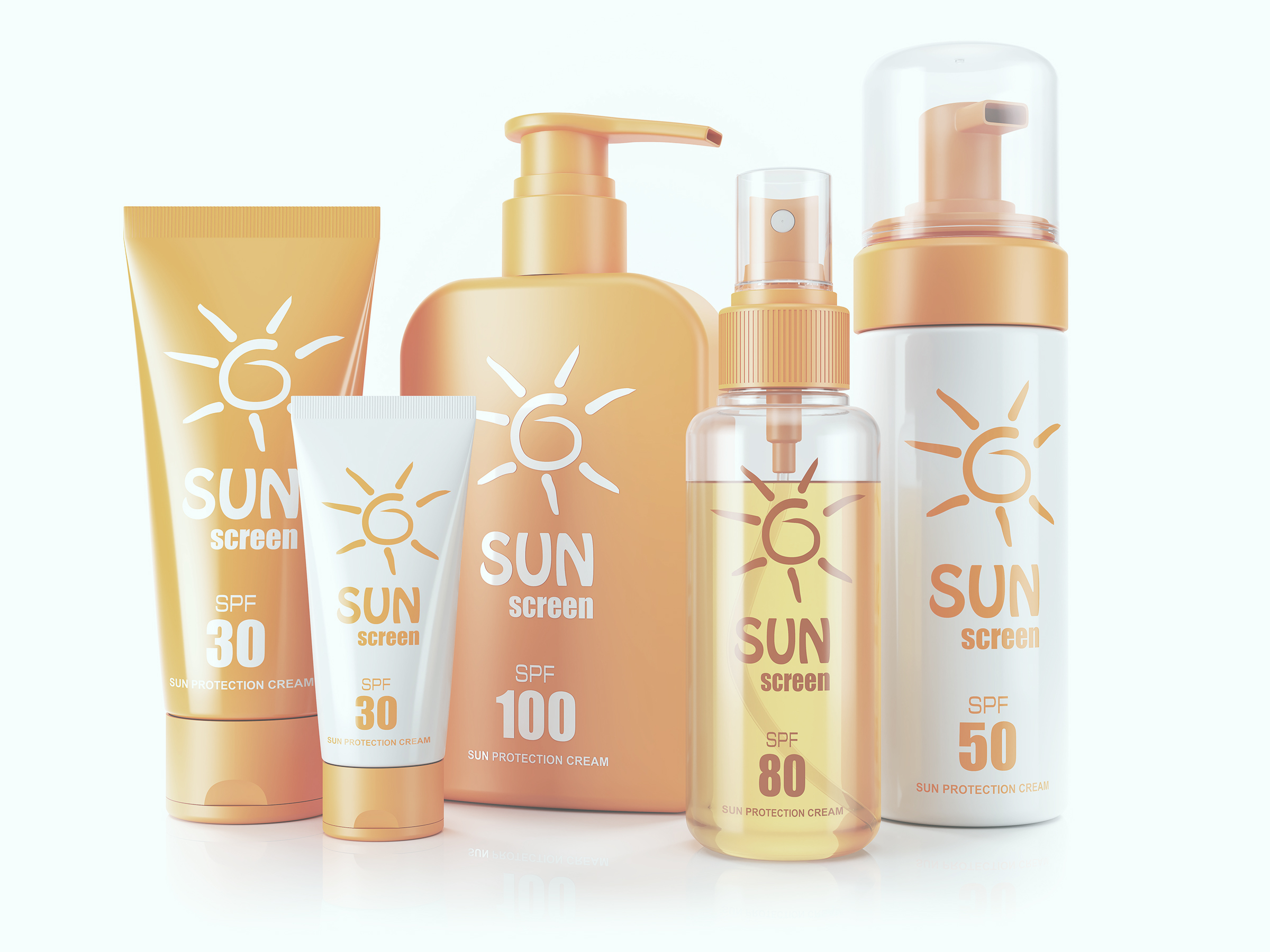How do I protect myself properly?
What is the difference between sunscreens?
Water, oil, emulsifiers, perfumes, emollients and UV filters: sun protection products. They are available in a wide variety of concentrations – as a cream, spray or lotion – and their bottles and tubes are on the shelves in all sorts of sizes, colors and shapes. But which one is the right one?
On the whole, sun protection products all work the same: the UV filters they contain anchor themselves in the upper layer of the skin and protect them. For a certain time, because the UV rays no longer attack the skin, but the filter. If it's destroyed, we have to apply more cream.
And here is the first stumbling block that most people fall over: once we have applied sunscreen, we feel safe and diligently soak up the sun. In the evening we wonder why the skin is tight or reddened. Was the product bad? The sun protection factor too low?
The sun protection factor
The sun protection factor of a sun cream or make-up indicates how much longer we can stay in the sun with this protection. It is the factor by which our self-protection is multiplied. But how high our self-protection is depends on the skin type. A very light-skinned person whose skin reddens quickly should therefore only be in the sun for a short time without protection when the UV value is medium. The skin type can be, for example here calculate.
So if I have a self-protection of say 10 minutes and use a product with an SPF of 30, I can stay in the sun for up to 300 minutes. BUT: The sun protection factor does not take into account the UV index, i.e. the strength of the sun. Experts therefore recommend halving the value again.
How to use sunscreen correctly
A lot helps a lot is not always the best advice, but when it comes to sun protection products, most people actually use too little. Products assume that you apply two milligrams per centimeter of skin. Nobody does that. So LSV 50 quickly becomes 30 if you don't use enough cream. And while we apply sunscreen extensively on vacation on the beach, at the lake or in the swimming pool, very few use sun protection products in everyday life. The UV rays are not suddenly gone just because we are no longer lounging in the sun.
The longer we stay in the sun, the more its rays affect our skin. Our body can deal with some of the UV rays on its own. We see it when our skin tans. But that doesn't last very long. If we exceed the threshold of self-protection, our skin burns. And it doesn't matter whether we are outside for five hours with a low UV index or half an hour with a very high UVI.
With a view to the sun protection factor of the sun protection product, we have to reapply cream regularly and plan times when we give our skin a break in the shade or with appropriate clothing. It is also important to ensure that the product we choose covers both UVA and UVB rays.
Caution: the sun's rays are more intense when we are near water, sand or snow. Salt and water, not only sea water but also sweat, weaken the effect of sun protection products. Athletes should therefore be particularly careful.
Use the shadow as a guide
When in the day am I exposed to what kind of sun exposure? The experts give the roughly noon and early afternoon time. This is where the sun shines most strongly. There is a rule of thumb that can help if precise information is not available:
If the shadow you cast is larger than yourself, the sun exposure is rather low. This is the case in the early morning and late afternoon.
If the shadow you cast is smaller, the sun is hitting you at its maximum daily dose.
Sunglasses or sun hat?
What about sun protection for the eyes? Dark glasses with a sun protection factor are our must-haves in summer. But ophthalmologists advise caution. The glasses help us to see better in bright light, but they also ensure that our eyes think it's not bright at all. The natural reaction: the pupils dilate and let in more light and thus more UV radiation the eyes.
If we take off our glasses, we give our eyes a full load of radiation and thus endanger our eyesight. It is better to wear wide-brimmed hats that keep the eyes and areas of the face in shadow. Or to combine both.
Sun protection for children
Our children's skin needs the most protection. In the period up to the age of 18, we are most likely to permanently damage our skin. We only feel the consequences – skin cancer – much later. You should therefore only play outside with light, long clothing and a hat. Body parts that are exposed to the sun should be well creamed.
This provides a good overview of all suitable protection options Federal Office of Public Health.
Share this post
About the author: Mariana Friedrich
Latest videos
- 12 minutes leg workout (no equipment)sam2019-11-28T21: 57: 46 + 00: 00
12 minutes leg workout (no equipment)
- 15 minutes high intensity full bodysam2019-11-28T21: 56: 38 + 00: 00
15 minutes high intensity full body
Join our mailing list today
Insider offers & flash sales in your inbox every week.
Error: Contact form not found.
Curabitur non nulla sit amet nisl tempus convallis quis ac lectus dolor sit amet, consectetur adipiscing elit sed porttitor lectus.



